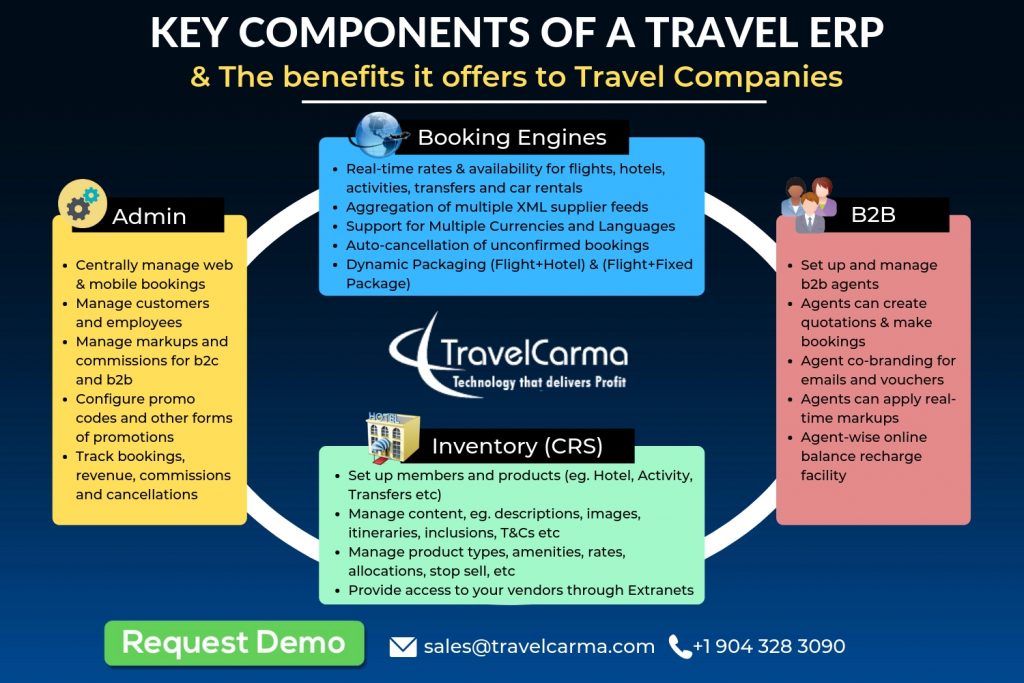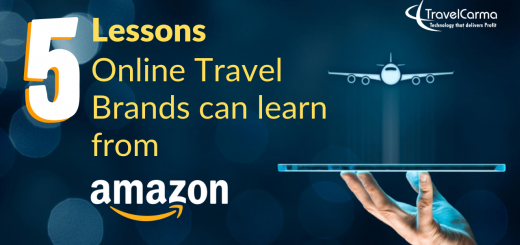5 Biggest Mistakes Travel Agencies make when Selecting a Travel ERP
A Travel ERP is an essential solution for travel agencies looking to grow their business and thrive in an increasingly digitized industry. However, oftentimes agencies don’t put enough thought into the system they choose and therefore don’t get the returns they expect.
It goes without saying that simple mistakes can cost your business big time, especially when investing in enterprise software.
So here are 5 of the biggest mistakes travel agencies make when selecting a Travel ERP and how you can avoid them.
1) Not being fully aware of what you really need
Not all Travel ERPs are created equal. Some are stronger in some areas than others; some are designed for small agencies while others are suited to the needs of large enterprises; some are compatible with third-party systems while others aren’t; some are localized for particular regions while others are more global in nature. Some offer a large degree of customization while others don’t.
So investing in a system just based on brand name or somebody’s recommendation without understanding if it fits your specific business needs can be detrimental. Before you start your hunt, prepare an RFP document detailing your requirements with appropriate weightage against each item. This will help you effectively map the various solutions out there against your requirements and save you a lot of time and trouble later on in the process. It will make the pre-sales communication with potential vendors much easier as you can simply send them this RFP document and ask them to send you a proposal based on this document.

2) Choosing a system based on cost alone
For many agencies, the biggest factor when choosing a Travel ERP is the price. That’s a huge mistake. While cost is important, it shouldn’t be your only criterion. A low cost solution may lack many critical features or may not be scalable and therefore end up costing your business a fortune in the long run.
Rather than focusing on the cost, you should focus on value and ROI. A solution that costs $10,000 but contributes $100,000 to your bottom line is better than one that costs $2000 and makes you $10,000.
So the ideal approach is to compare systems based on the value each one offers to your business and choose the one which offers the best value.

3) Focusing only on the booking engine part
One of the biggest mistakes buyers make when selecting a Travel ERP is their understanding of its scope. They focus only on the front end and the look-and-feel of the booking engine. They completely ignore the back office capabilities and productivity features which are extremely useful for an agency. There are tons of cheap booking engine and white label solutions available out there but they don’t let you manage multiple areas of your business like an ERP does.
The profitability of a travel agency doesn’t depend only on the number of bookings but also on its efficiency and cost of generating those bookings. A booking engine may help you capture online bookings to an extent, but a strong Travel ERP with its back-office automation, accounting reconciliation and extensive reporting features can help you not only get more bookings but also minimize your overheads, thus helping you generate more profit.
Also, with an ERP you won’t have to manage multiple systems as a single solution would help you manage bookings, customers, agents, inventory and accounting.

4) Choosing the wrong implementation model
Travel ERPs are typically available in two models based on where they are hosted: Cloud-based and On-premise. Cloud ERPs are hosted on a common cloud server shared by several users, whereas in case of On-premise deployment the solution is hosted on the user’s own dedicated server.
Both models have their pros and cons and the model you choose will have serious repercussions on your business, which many agencies overlook or aren’t aware of. So it’s important to take time understanding both models and then decide what’s best for your business. For an in-depth comparison of these models, download our free ebook.

5) Ignoring the people behind the product
Another serious mistake buyers make is focus only on the product, while ignoring the team behind it. The world of online travel is changing rapidly, and the things that work today can quickly become obsolete tomorrow. Moreover, given the complexity of the distribution chain and countless moving parts, things don’t always go the way you expect, particularly when you’ve integrated third-party suppliers.
To manage such complexities and unpredictability you not only need a strong product but also a solid team behind it – one that has the agility to not only quickly adapt to any changes(positive or negative) in the environment but also the expertise and thought leadership to constantly innovate and design future proof solutions for your business.
Lastly, you also need to take into account the vendor’s organization culture, personalities and approach to customer service if you’re looking at a long-term business relationship.

Enjoyed reading this article? Subscribe to our blog to get more tips and tricks straight into your inbox!
We also provide an end-to-end Travel ERP solution with tons of features that have helped tourism companies in over 60 countries improve their bottom line 5x. Click here to know more.

About the Author
Chintan is the senior marketing manager at TravelCarma. He is a data-driven inbound marketing specialist with strong experience and a proven track record in strategizing and executing omni-channel marketing campaigns. He enjoys traveling and exploring off-the-beaten-tracks.








Thank you very much TravelCarma